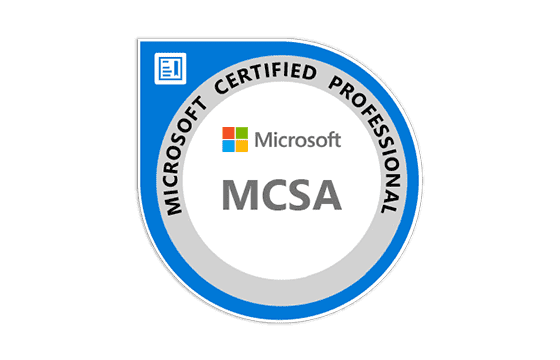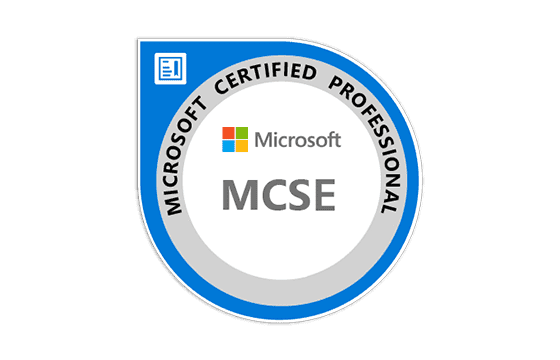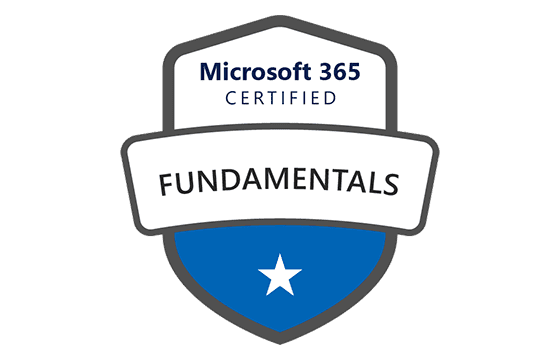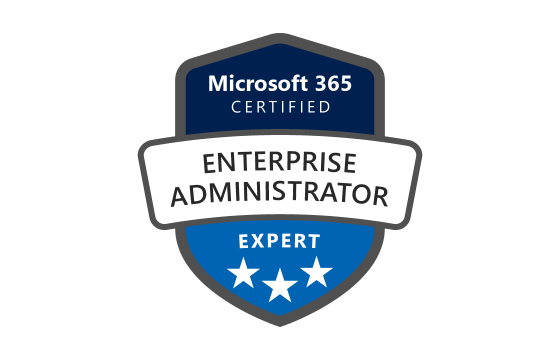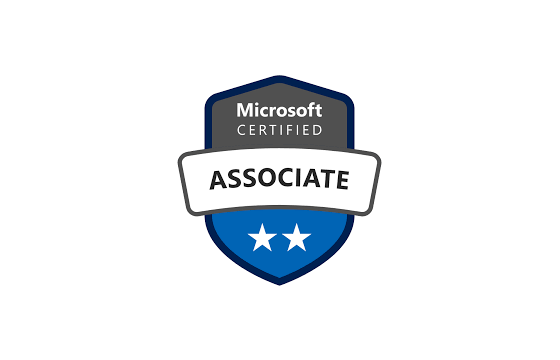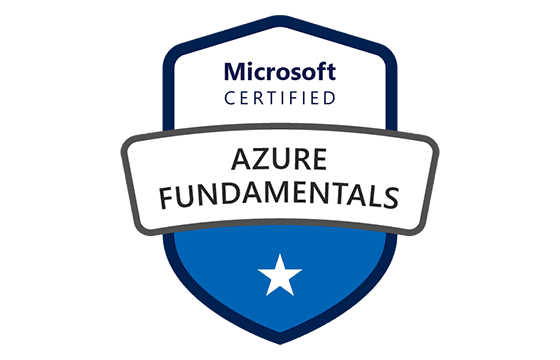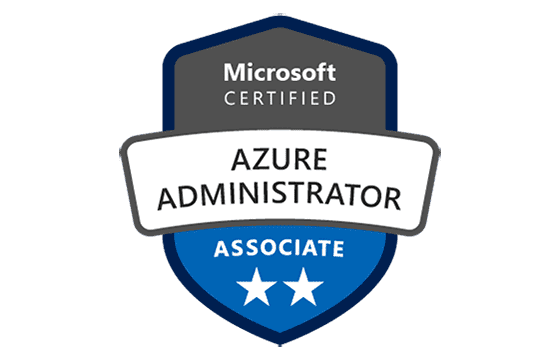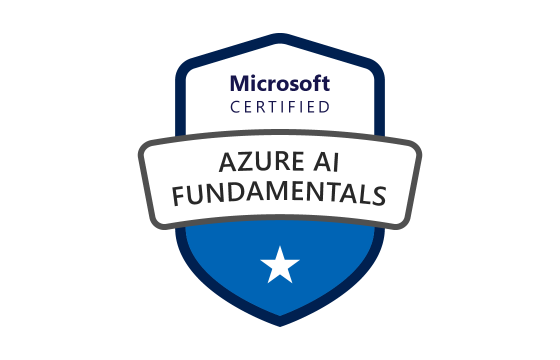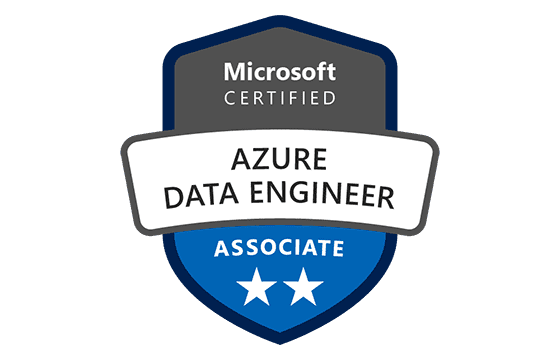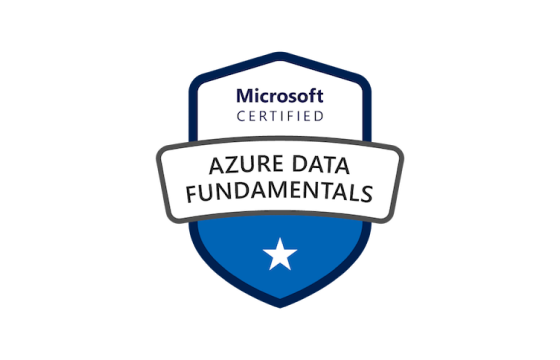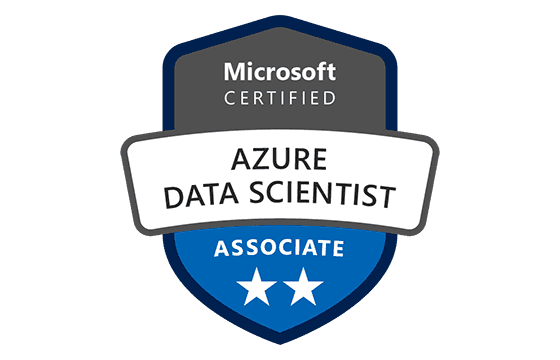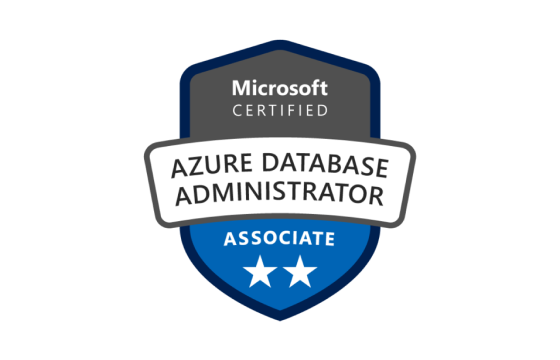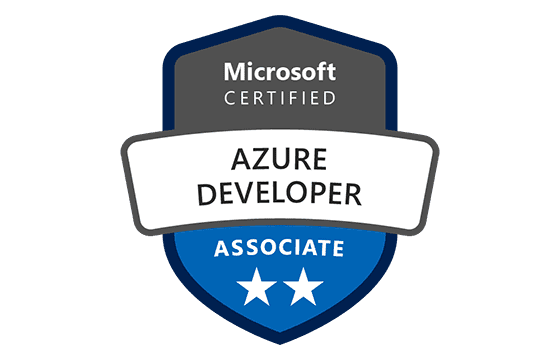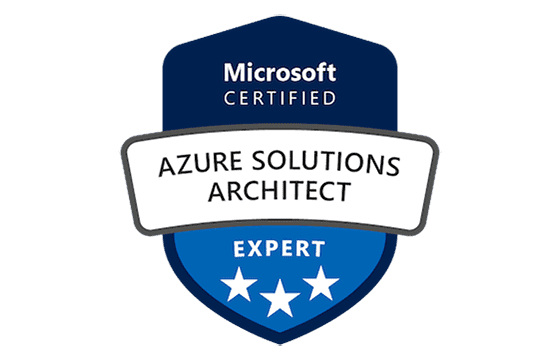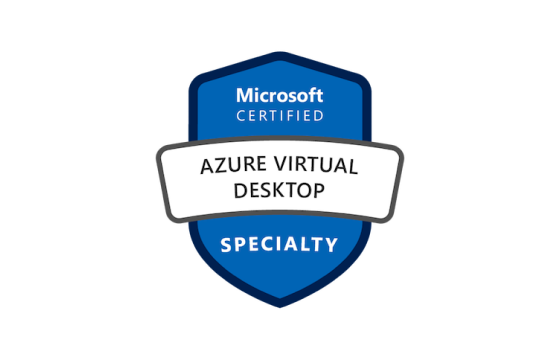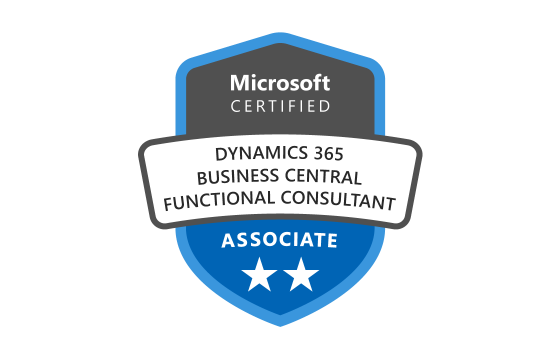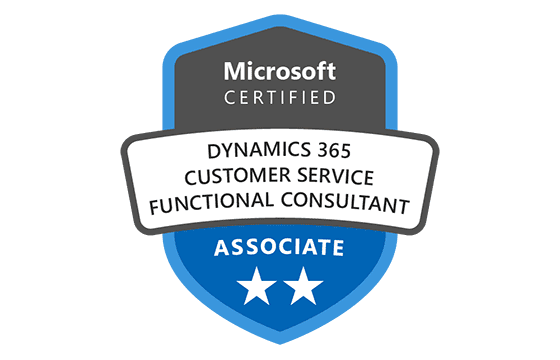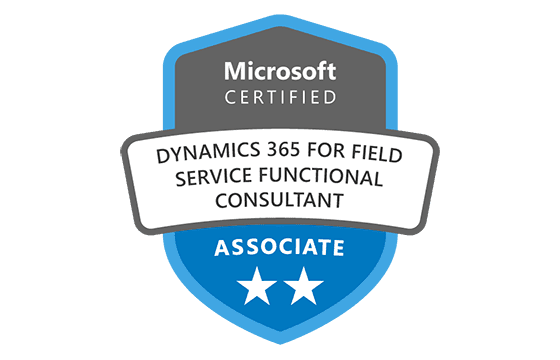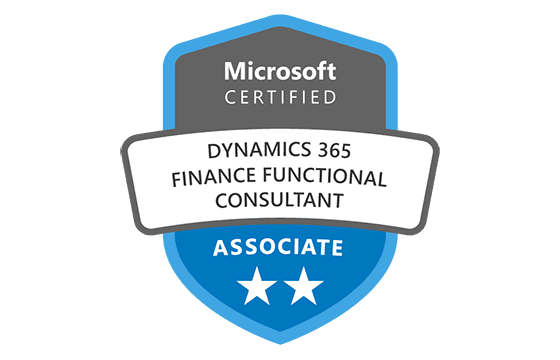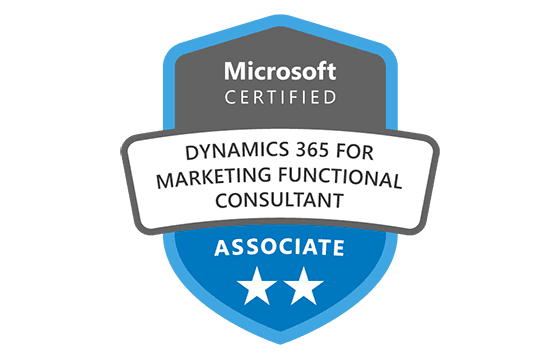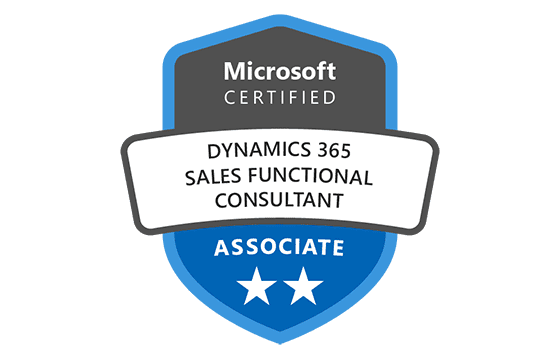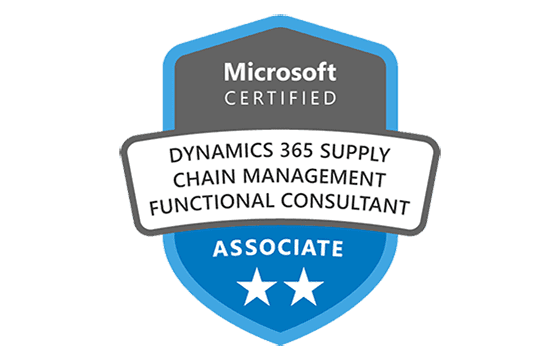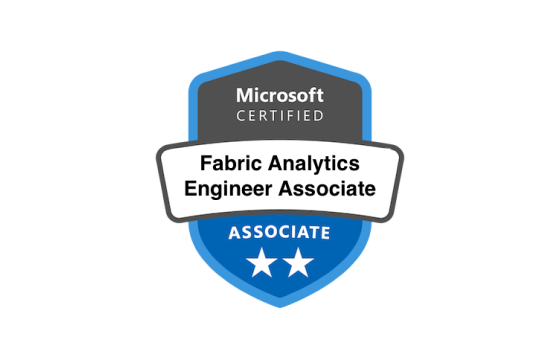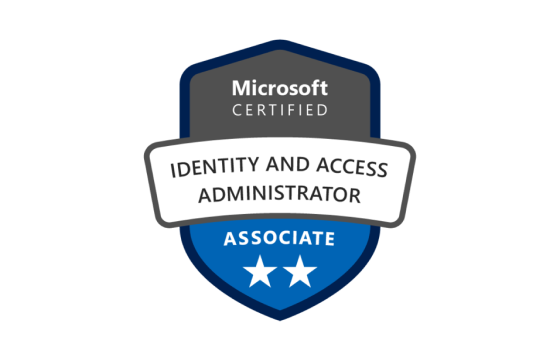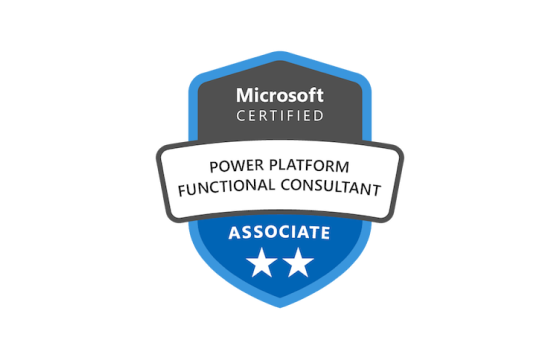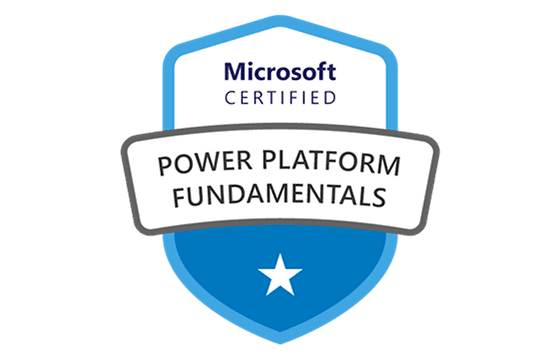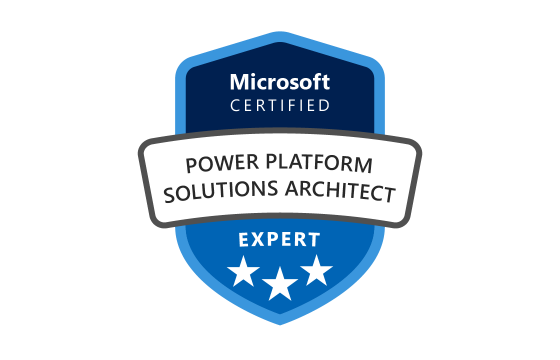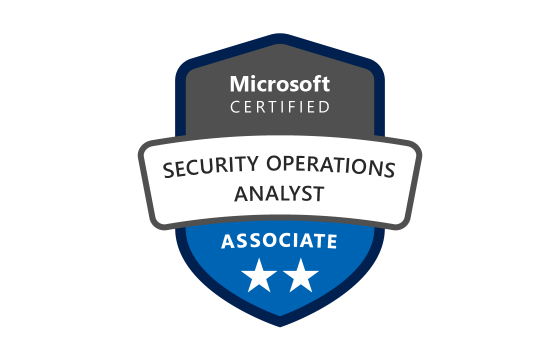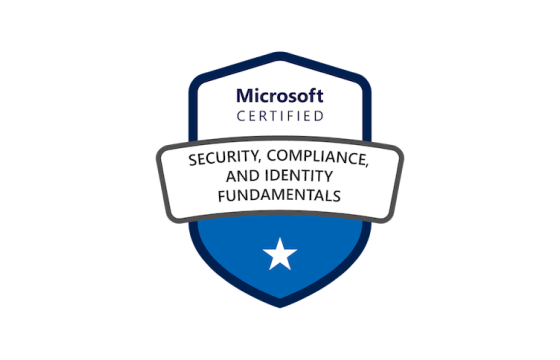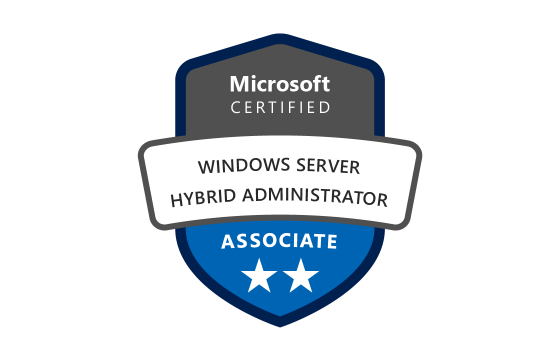Pass Your Microsoft 70-400 Exam Easy!
Microsoft 70-400 Exam Questions & Answers, Accurate & Verified By IT Experts
Instant Download, Free Fast Updates, 99.6% Pass Rate
Microsoft 70-400 Practice Test Questions in VCE Format
| File | Votes | Size | Date |
|---|---|---|---|
File Microsoft.SelfTestEngine.70-400.v2012-08-29.by.Kaden.137q.vce |
Votes 1 |
Size 315.88 KB |
Date Aug 29, 2012 |
File Microsoft.Certkey.70-400.v2012-03-15.by.Mark.132q.vce |
Votes 1 |
Size 303.63 KB |
Date Mar 15, 2012 |
Archived VCE files
| File | Votes | Size | Date |
|---|---|---|---|
File Microsoft.Certkey.70-400.v2011-11-24.by.Kallis.120q.vce |
Votes 1 |
Size 276.6 KB |
Date Nov 24, 2011 |
File Microsoft.Certkey.70-400.v2011-06-08.by.Eldon.110q.vce |
Votes 1 |
Size 257.75 KB |
Date Jun 09, 2011 |
File Microsoft.SelfTestEngine.70-400.v2010-07-31.by.Unokubi.105q.vce |
Votes 1 |
Size 247.9 KB |
Date Aug 04, 2010 |
File Microsoft.SelfTestEngine.70-400.v2010-02-17.by.Rex.99q.vce |
Votes 1 |
Size 168.73 KB |
Date Feb 17, 2010 |
File Microsoft.SelfTestEngine.70-400.v6.0.by.Certblast.94q.vce |
Votes 1 |
Size 108.93 KB |
Date Jul 30, 2009 |
Microsoft 70-400 Practice Test Questions, Exam Dumps
Microsoft 70-400 (TS: Microsoft System Center Operations Manager 2007, Configuring) exam dumps vce, practice test questions, study guide & video training course to study and pass quickly and easily. Microsoft 70-400 TS: Microsoft System Center Operations Manager 2007, Configuring exam dumps & practice test questions and answers. You need avanset vce exam simulator in order to study the Microsoft 70-400 certification exam dumps & Microsoft 70-400 practice test questions in vce format.
Strategic Infrastructure Configuration and Management in Modern Microsoft 70-400 Ecosystems
In the intricate domain of enterprise technology, the architecture of infrastructure management defines the stability, security, and agility of every digital operation. As organizations expand into hybrid and multi-layered environments, the orchestration of servers, networks, and management protocols has evolved from a back-end necessity to a central pillar of business strategy. Among the sophisticated frameworks that enable this level of cohesion and efficiency, Microsoft stands at the forefront, shaping enterprise capabilities through a suite of integrated technologies designed for advanced control and seamless coordination. The depth of expertise required to manage such environments is reflected in professional standards associated with complex system management, a domain in which the assessment identified by the number 70-400 serves as a focused waypoint for validating competence.
The technological ecosystem that supports an organization today no longer operates within the confines of static infrastructure. It has become dynamic, adaptive, and relentlessly interconnected. Systems must not only be deployed but also continuously maintained, updated, and optimized across varied workloads and user requirements. This is where the synergy between configuration and management becomes essential. Microsoft’s infrastructure management solutions provide the capability to unify control across both physical and virtualized environments, ensuring that every node, service, and policy operates under cohesive governance. Such frameworks are not just about toolsets but about strategic alignment between IT management and business objectives.
Strategic Infrastructure Configuration and Management in Modern Microsoft Ecosystems
Automation has emerged as the pulse of operational efficiency. Manual configuration is no longer feasible in ecosystems that encompass thousands of devices, servers, and endpoints. Automated deployment, consistent policy enforcement, and proactive performance monitoring have become cornerstones of reliable management. Microsoft’s approach to this paradigm integrates configuration management databases, orchestration engines, and monitoring solutions to enable self-sustaining infrastructures that can adapt in real time. Professionals navigating this terrain demonstrate deep technical literacy—an appreciation not merely of how systems function, but how they evolve under pressure.
Configuration management represents both science and art. The science lies in the precise application of policies, scripts, and rules; the art lies in anticipating failure points, identifying bottlenecks, and structuring systems that can self-correct under strain. In a Microsoft-centric environment, configuration extends beyond mere setup. It encompasses lifecycle management, patching, compliance adherence, and environmental analytics. These processes ensure that every operational layer remains synchronized with organizational demands. When mismanaged, these systems can create fragmentation, latency, or even security vulnerabilities. But when guided by the principles and syllabus areas reflected by the 70-400 benchmark, configuration transforms from a reactive function into a proactive strategic capability.
Security integration stands at the core of every infrastructure management strategy. The interconnected nature of enterprise systems means that one misconfigured policy can cascade into widespread vulnerabilities. Microsoft’s ecosystem emphasizes security not as an isolated discipline but as a woven thread across every configuration layer. Through policy enforcement, role-based access control, and encryption protocols, administrators maintain visibility and authority without compromising accessibility. The continual alignment of security baselines with evolving threat landscapes forms a living system of defense—fluid, intelligent, and resilient. Professionals grounded in advanced system management standards understand that security cannot be static; it must be recalibrated continuously to match the rhythm of technological advancement.
Monitoring, another critical component of infrastructure management, ensures visibility into operational performance. Microsoft’s monitoring solutions extend across physical servers, virtual machines, and cloud resources, generating comprehensive telemetry that transforms data into insight. Yet the true skill lies not in merely collecting metrics but in interpreting them. Performance counters, system logs, and event data become instruments for predicting instability before it manifests. The ability to translate technical metrics into strategic action differentiates expert administrators from routine operators. This level of insight, cultivated through structured learning and real-world experience, underpins the professional rigor expected in environments aligned with advanced Microsoft configurations.
The evolution of infrastructure management also mirrors the broader shift from reactive maintenance to predictive governance. Automation, artificial intelligence, and analytics now underpin decision-making processes that were once manual. Microsoft’s platforms encapsulate this shift by integrating predictive intelligence into system management tools, allowing administrators to detect anomalies, forecast capacity, and recommend optimizations before performance deteriorates. This predictive layer marks a fundamental shift in the philosophy of management—it transforms administration from passive oversight into active orchestration.
Equally vital is scalability. The infrastructure that supports an organization must expand as the business evolves, often without downtime or disruption. Microsoft’s integrated frameworks allow administrators to scale configurations seamlessly across thousands of nodes and multiple data centers. This elasticity ensures that growth does not compromise performance or security. Scalability is not merely about adding capacity; it’s about maintaining coherence under expansion. When every subsystem continues to align with the central management policies, the infrastructure behaves as a single, intelligent entity rather than a collection of disparate components.
Change management represents another cornerstone of robust infrastructure governance. Change introduces risk, yet in dynamic organizations, it is inevitable. The key is to balance adaptability with stability. Microsoft’s solutions support version control, rollback mechanisms, and automated testing environments that allow administrators to introduce modifications safely and systematically. Professionals familiar with the 70-400 level of knowledge understand that every configuration change ripples across interconnected systems. Therefore, rigorous change control protocols and validation processes ensure that evolution never destabilizes operations.
Compliance management, once a secondary concern, now commands equal importance with performance and security. Global regulations and industry standards impose strict data governance requirements, demanding traceability, accountability, and audit readiness. Microsoft’s infrastructure solutions integrate compliance frameworks directly into management systems, enabling administrators to generate reports, validate configurations, and demonstrate adherence efficiently. However, the technology itself is only as effective as the expertise guiding it. Skilled professionals translate compliance mandates into actionable configurations, ensuring that organizations meet external obligations without impeding operational flow.
As digital transformation accelerates, hybrid environments—where on-premises infrastructure coexists with cloud-based services—become the new standard. Microsoft’s ecosystem supports this convergence with unified management consoles that extend visibility across hybrid domains. The synchronization of identities, policies, and resources across these environments ensures seamless operation regardless of physical location. Administrators mastering these tools bridge the gap between traditional IT and cloud-native architectures, allowing organizations to harness innovation without abandoning control.
Incident management forms the backbone of operational reliability. No matter how sophisticated a system becomes, failures are inevitable. What differentiates resilient infrastructures from vulnerable ones is the speed and precision of response. Microsoft’s monitoring and alerting mechanisms, when integrated with automation workflows, enable immediate detection and remediation of issues. The professionals who command this process treat incidents not as disruptions but as data points for continuous improvement. Their discipline transforms crisis response into a cyclical refinement that strengthens the infrastructure with each iteration.
Capacity planning and optimization remain fundamental in preventing performance degradation. Microsoft’s analytical tools offer deep insights into resource utilization, workload distribution, and forecast modeling. Effective capacity planning requires understanding not just the current demand but also anticipating future requirements based on user behavior and organizational goals. Practitioners versed in the knowledge domains related to the 70-400 focus area interpret these metrics to allocate resources efficiently, ensuring that the system maintains equilibrium under fluctuating workloads.
Documentation, often overlooked, sustains the continuity of infrastructure operations. Complex environments demand precise records of configurations, dependencies, and update histories. Microsoft frameworks encourage documentation as a living artifact—a reference that evolves alongside the system itself. Skilled administrators maintain this discipline rigorously, enabling consistency even as personnel or strategies change. Documentation does not merely record what has been done; it informs what must be done next, guiding future adjustments and preventing repetition of errors.
At the philosophical core of infrastructure management lies the principle of harmony between control and flexibility. Too much rigidity stifles innovation, while too much freedom invites chaos. Microsoft’s solutions embody this balance by offering structured policies that can be tailored to meet unique business needs. This adaptability ensures that organizations can maintain compliance and efficiency while still innovating. Professionals who grasp this equilibrium understand that technology serves people—not the other way around. The ultimate goal is to empower rather than constrain.
The human dimension of infrastructure governance cannot be understated. Technical excellence must be coupled with communication, leadership, and process orientation. Administrators often act as translators between executive strategy and technical execution, ensuring that service-level objectives align with business priorities. The cognitive skills nurtured through study and practice in areas associated with the 70-400 designation enable practitioners to make risk-informed decisions, communicate trade-offs, and justify architectural choices to stakeholders.
Sustainability and cost efficiency also enter the calculus of modern infrastructure management. Cloud economics, power utilization, and hardware lifecycle planning affect both the bottom line and environmental footprint of operations. Microsoft’s management tools provide cost visibility and optimization recommendations, but meaningful savings result from strategic planning and disciplined governance. Professionals who incorporate financial acumen into their technical practice ensure that growth is sustainable, resilient, and aligned with long-term organizational goals.
Continuous learning underscores every aspect of infrastructure mastery. Technology shifts at a relentless pace, and organizations benefit from administrators who remain curious, disciplined, and engaged with emerging practices. Certification benchmarks such as the one identified by the number 70-400 provide structured milestones for developing the technical and strategic depth required to steward enterprise systems. These assessments encourage practitioners to internalize principles of automation, security, compliance, and architecture, ensuring that the infrastructure not only operates but evolves to meet future challenges.
In the grand scope of digital enterprise evolution, infrastructure management has matured from being an operational necessity to becoming a strategic differentiator. Businesses that master configuration and governance gain agility, reliability, and insight. The principles encapsulated in the frameworks associated with advanced Microsoft standards define this mastery. They foster a culture of proactive management, continuous improvement, and technological foresight. As the technological horizon expands, organizations that invest in structured, intelligent, and adaptive infrastructure management position themselves at the vanguard of digital resilience. The professionals who drive these environments do more than maintain technology; they sculpt the invisible architecture of progress.
Evolving Infrastructure Management in Enterprise Environments
The technological landscape within large organizations has always been defined by its adaptability. As global markets expand, companies require robust, intelligent, and scalable infrastructure solutions that transcend traditional management models. Microsoft’s enterprise systems have continually advanced to provide these capabilities through comprehensive frameworks that unify configuration, deployment, and monitoring across hybrid environments. This evolutionary process has given rise to a sophisticated approach where automation, integration, and analytics converge to create efficiency and resilience.
In the modern enterprise ecosystem, managing servers, applications, and network resources involves far more than routine maintenance. The integration of centralized tools, adaptive frameworks, and predictive algorithms has transformed the role of system administrators. Rather than merely overseeing hardware or software states, they now orchestrate entire environments that stretch from local datacenters to global cloud infrastructures. Microsoft’s administrative technologies have served as the backbone for this transformation, offering tools that manage configurations, standardize deployments, and ensure policy compliance across distributed architectures. The code that signifies advanced administrative mastery encapsulates these evolving responsibilities, requiring not just familiarity with tools but also a deep understanding of system behavior, communication pathways, and security postures.
As organizations scale, infrastructure management becomes a balancing act between agility and control. The introduction of modular systems and remote management solutions allowed administrators to configure hundreds of nodes simultaneously while maintaining centralized governance. Through automation scripts and configuration baselines, operational teams can now enforce consistent standards and react to deviations in real time. These frameworks also integrate tightly with monitoring systems that continuously assess the health and performance of servers, network interfaces, and services. The result is a self-aware ecosystem capable of detecting inefficiencies before they impact users. Microsoft’s approach to this integrated infrastructure management places great emphasis on the seamless interplay between components, enabling rapid adaptation to emerging technologies and security requirements.
The transformation of infrastructure management also stems from the growing emphasis on predictive maintenance. Traditional models relied on reactive responses—fixing problems after they occurred. The modern methodology, however, utilizes telemetry data, historical performance analytics, and machine learning algorithms to anticipate potential disruptions. Microsoft’s management platforms have evolved to capture and interpret vast datasets from network endpoints, enabling administrators to visualize patterns and predict failures. This predictive capability redefines operational continuity, allowing enterprises to schedule maintenance, optimize workloads, and reduce downtime significantly. It represents a philosophical shift from static oversight to dynamic intelligence, where systems learn and adapt alongside the business they serve.
Beyond performance and uptime, another critical dimension is compliance and governance. Enterprises today operate under stringent regulations governing data protection, access control, and information transparency. Managing compliance manually across hundreds or thousands of devices is impractical, and that’s where configuration automation tools become indispensable. Microsoft’s management solutions integrate compliance tracking directly into configuration policies, ensuring that any deviation triggers alerts or automatic remediation. These capabilities are particularly vital in hybrid or multi-cloud environments where security postures vary between local servers and remote platforms. By embedding governance mechanisms at the configuration level, organizations can maintain uniform standards without stifling innovation or flexibility.
Virtualization further complicates the management equation. As enterprises virtualize workloads across private and public clouds, maintaining visibility into these dynamic systems becomes challenging. Virtual machines can appear and disappear in seconds, and resource allocation changes constantly based on demand. Microsoft’s administrative platforms address these challenges by centralizing visibility and extending management frameworks to cover virtualized and containerized workloads. Through integration with hypervisors and orchestration tools, administrators gain comprehensive insight into workload distribution, performance metrics, and dependency chains. This visibility enables efficient scaling and ensures that virtual environments remain compliant with organizational policies.
Security, of course, underpins every layer of modern infrastructure management. With threats becoming more sophisticated and persistent, organizations require security that adapts as quickly as their infrastructure does. Microsoft’s management approach embeds security into every operational phase—configuration, deployment, and monitoring. Role-based access control restricts administrative privileges, encryption safeguards communication channels, and auditing mechanisms record every change across the environment. Furthermore, automation scripts can enforce security baselines, ensuring that servers and applications remain hardened against known vulnerabilities. These proactive measures collectively establish a robust defense that evolves alongside the threat landscape.
Another transformative element of modern infrastructure management is the integration of artificial intelligence and analytics. Microsoft’s enterprise systems leverage AI-driven insights to enhance operational efficiency, resource allocation, and service reliability. Intelligent algorithms analyze telemetry data in real time, identifying inefficiencies, misconfigurations, or potential bottlenecks before they escalate into outages. These insights enable administrators to make data-driven decisions, optimize performance, and predict future needs based on historical usage trends. AI does not replace human oversight; instead, it augments it by automating repetitive tasks and surfacing insights that might otherwise remain hidden in massive data streams.
Collaboration between teams is also reshaping the operational culture of IT management. Traditionally, infrastructure, application, and security teams worked in isolation, each focusing on their domain-specific challenges. However, the interconnected nature of modern systems demands a more unified approach. Microsoft’s platforms promote collaboration through integrated consoles and shared data repositories, ensuring that every team operates with the same contextual awareness. This unity fosters faster problem resolution, more accurate change management, and streamlined communication across departments. It transforms infrastructure management from a fragmented process into a holistic discipline centered on shared accountability.
Hybrid and multi-cloud strategies further emphasize the importance of adaptive management tools. Enterprises rarely rely on a single environment anymore. Instead, they distribute workloads between on-premises datacenters, public clouds, and edge locations. Managing such distributed systems requires platforms that can span these boundaries seamlessly. Microsoft’s solutions excel in this area by offering unified dashboards that provide visibility across all infrastructures, regardless of location or underlying technology. This flexibility allows organizations to leverage the strengths of each environment—scalability, cost efficiency, or latency optimization—without losing centralized control.
The continuous evolution of enterprise infrastructure also underscores the growing significance of lifecycle management. Systems and applications progress through predictable phases: deployment, optimization, scaling, and retirement. Neglecting any phase can lead to inefficiencies or vulnerabilities. Microsoft’s administrative frameworks encompass the entire lifecycle, providing mechanisms for patch management, performance tuning, and capacity planning. Automated workflows ensure that software remains updated, configurations remain optimized, and legacy components are retired in a controlled manner. This lifecycle perspective ensures that infrastructure remains agile, efficient, and secure throughout its operational lifespan.
In addition to technical complexity, there’s a strategic dimension to infrastructure management that often goes unnoticed—the alignment between technology and business goals. Modern organizations depend on technology not merely as a support function but as a competitive differentiator. The ability to deploy services rapidly, scale operations globally, and recover swiftly from disruptions directly affects market performance. Microsoft’s management methodologies acknowledge this connection, positioning IT as a strategic enabler rather than a cost center. By aligning configuration, monitoring, and automation with business priorities, organizations can transform infrastructure management into a catalyst for innovation and growth.
Training and certification also play a crucial role in sustaining these advancements. As management systems evolve, so too must the professionals who operate them. The knowledge represented by Microsoft’s advanced credentials signifies mastery not only of specific tools but of the underlying principles governing modern IT ecosystems. This includes understanding network topologies, security frameworks, and the orchestration of automated processes across diverse environments. Certified professionals serve as the bridge between theoretical knowledge and practical implementation, ensuring that organizational infrastructure remains resilient, optimized, and secure.
The journey toward advanced infrastructure management is ongoing. Technologies that seemed revolutionary a decade ago are now baseline expectations. The next frontier lies in self-healing systems that can autonomously detect, diagnose, and correct issues with minimal human intervention. Microsoft’s research and development in this space are already hinting at this future—systems that can patch themselves, rebalance workloads, and adapt dynamically to external changes. The promise of such intelligent infrastructure heralds an era where operational downtime and manual intervention become relics of the past.
Equally important is the environmental consideration of infrastructure management. With sustainability emerging as a global priority, data centers are being reimagined for energy efficiency. Microsoft’s leadership in designing eco-friendly server farms powered by renewable energy sources reflects a broader commitment to responsible innovation. Efficient resource utilization, automated scaling, and intelligent cooling systems all contribute to minimizing carbon footprints. This integration of sustainability into infrastructure management represents a vital evolution in how technology interacts with the planet.
The story of infrastructure management within enterprise environments is one of perpetual transformation. Each phase introduces new challenges, but also new opportunities for optimization and growth. Through innovation, integration, and intelligence, Microsoft’s frameworks continue to shape the way organizations manage their digital ecosystems. The synergy between automation, governance, and predictive analytics ensures that infrastructure is no longer just a background mechanism—it becomes a living, adaptive organism that evolves with the business it supports. This dynamic interplay between human expertise and intelligent technology defines the modern enterprise and sets the stage for even greater advancements to come.
Advanced Systems Configuration and Enterprise Optimization
Modern enterprise technology stands upon a foundation of configuration control, seamless interoperability, and structured optimization. Within this digital structure, system configuration forms the invisible architecture that determines reliability, adaptability, and operational intelligence. Microsoft’s enterprise management framework emerged to meet the complexities of this paradigm, transforming scattered systems into unified entities governed by precision and foresight. The progression from manual configuration toward automated, policy-driven management embodies the journey toward operational excellence, where every setting and parameter synchronizes to fulfill both technical and strategic objectives.
Enterprises across the globe operate on a tapestry of technologies—servers, networks, applications, and security policies—all of which must function as a synchronized organism. Historically, managing these components required hands-on intervention, an approach that introduced inconsistency and risk. Configuration management evolved to address this problem, replacing guesswork with structured governance. Microsoft’s administrative platforms provide the tools and frameworks that enable organizations to manage complex systems through central consoles and predefined templates. These mechanisms empower IT administrators to define the desired state of their environments, ensuring that every configuration remains compliant, consistent, and aligned with enterprise goals. The associated certification that correlates with these technologies represents mastery of these intricate practices, demanding both theoretical understanding and practical proficiency.
At the core of this system lies the principle of automation. Automation eliminates human error, accelerates deployment, and reduces overhead by embedding intelligence into every configuration cycle. Administrators no longer need to repeat mundane tasks or rely on static documentation; instead, they implement scripts, modules, and workflows that execute precisely according to policy. This controlled automation is particularly critical in large enterprises, where even a minor misconfiguration can ripple through thousands of endpoints. Microsoft’s approach to automation integrates seamlessly with its management suite, allowing organizations to define configuration baselines, enforce compliance dynamically, and remediate deviations automatically. This paradigm establishes predictability—a hallmark of efficient systems management.
In enterprise environments, optimization extends beyond performance. It encompasses scalability, resource utilization, and lifecycle continuity. Each of these elements contributes to the broader objective of maintaining business resilience. Microsoft’s management technologies utilize integrated data collection and analysis tools that provide real-time visibility into infrastructure performance. Administrators can identify underutilized resources, rebalance workloads, and fine-tune systems to achieve maximum throughput. By correlating telemetry data with configuration baselines, they gain insights into which adjustments yield measurable improvements. The combination of configuration and analytics creates a feedback loop where systems continuously refine themselves based on evolving operational demands.
Another defining aspect of modern configuration management is policy enforcement. In a corporate ecosystem governed by security, compliance, and accountability, policies define the boundaries within which technology operates. Microsoft’s systems allow administrators to encode policies directly into configuration models, ensuring that every deployed system adheres to organizational standards automatically. These policies extend from security baselines—like enforcing encryption or password complexity—to operational standards involving software versions, patch levels, and service availability. When a system deviates from these defined parameters, it can be automatically corrected through policy-driven remediation. This self-healing capability reduces the administrative burden and enhances overall system reliability.
Configuration also intersects with network management. As enterprises adopt hybrid architectures that span local and cloud environments, the complexity of managing network configurations grows exponentially. Routing, addressing, and connectivity policies must align with both internal requirements and external compliance standards. Microsoft’s management frameworks integrate with network monitoring and automation tools to ensure consistency across all network layers. By centralizing configuration and monitoring, organizations can trace issues to their root cause more effectively, minimizing downtime and optimizing data flow across regions. The synchronization of configurations across hybrid environments fosters a cohesive operational experience regardless of geography.
Virtualization and cloud computing have redefined what configuration means in an enterprise context. With physical hardware abstracted into software-defined components, administrators no longer configure individual devices but instead define templates for virtual resources. Microsoft’s management systems extend this approach, enabling the deployment of entire environments from predefined images. This not only accelerates provisioning but also ensures consistency between development, testing, and production environments. The underlying logic of this system revolves around repeatability—every instance behaves identically because it originates from the same controlled configuration source. This predictability becomes indispensable for organizations seeking stability amid expansion.
Security configuration, too, forms an integral part of enterprise optimization. As digital threats evolve, so must the mechanisms that defend against them. Configuration errors remain one of the most common vectors for security breaches. Microsoft’s management ecosystem embeds security at the heart of configuration management, enforcing strict compliance with defined baselines. Administrators can deploy secure templates that automatically apply encryption, restrict access, and log critical events. This proactive approach minimizes exposure by ensuring that security posture is established before deployment. Continuous monitoring further guarantees that any unauthorized modification triggers alerts or automatic corrections. In this model, configuration itself becomes a guardian of security rather than a vulnerability.
Beyond technical consistency, the human element remains essential. Effective configuration management depends on expertise, collaboration, and strategic insight. The professionals who achieve mastery in managing complex Microsoft environments embody a synthesis of analytical reasoning and hands-on dexterity. They understand the relationships between system components, anticipate dependencies, and foresee how one modification may influence another. Their ability to translate abstract configurations into stable, responsive environments defines the success of enterprise operations. The certification tied to these skills signifies more than passing an exam—it validates a mindset attuned to precision, foresight, and continuous improvement.
Another dimension of optimization lies in change management. Enterprises constantly evolve—merging departments, integrating new technologies, and expanding to new markets. Each transformation introduces changes to configurations that must be tracked and validated. Microsoft’s management solutions embed change tracking directly into configuration workflows, allowing administrators to monitor who made modifications, when, and why. This traceability enhances accountability and reduces the likelihood of unauthorized or erroneous changes. In large organizations where dozens of administrators may have overlapping responsibilities, this capability is indispensable for maintaining order within complexity.
A critical enabler of configuration management is the repository system. This centralized storage ensures that all configuration data, policies, and scripts are version-controlled and auditable. Microsoft’s design philosophy emphasizes transparency—every configuration artifact can be retrieved, reviewed, or rolled back as needed. This allows enterprises to maintain historical awareness of their infrastructure, analyze trends, and recover swiftly from misconfigurations or system failures. Version control also supports innovation by allowing controlled experimentation within safe boundaries. Administrators can test new configurations in sandbox environments before applying them globally, mitigating risk while encouraging continuous improvement.
Integration with other enterprise systems further enhances configuration management. In a connected environment, configurations influence application behavior, user experience, and service performance. Microsoft’s architecture supports integration with application delivery controllers, security monitoring systems, and compliance frameworks, allowing configurations to propagate seamlessly across diverse tools. This interoperability establishes a unified control plane where every layer of infrastructure responds coherently to changes. The resulting synergy streamlines operations, reduces redundancy, and fosters adaptive resilience.
As enterprises adopt hybrid IT models, the demand for cross-platform management becomes increasingly pronounced. Configuration systems must now orchestrate not only Microsoft technologies but also third-party solutions. The evolution of open standards and APIs has enabled this interoperability, allowing administrators to extend Microsoft’s management principles into multi-vendor environments. This cross-domain management reflects a strategic necessity: organizations cannot afford silos in an era of integration. Unified visibility and control translate into operational agility—a decisive advantage in the competitive digital economy.
The rise of artificial intelligence within configuration management represents another milestone in enterprise optimization. Machine learning models embedded in Microsoft’s management suites analyze configuration data to identify anomalies, predict failures, and recommend improvements. These intelligent systems learn from historical performance and usage patterns, offering actionable insights that would otherwise remain hidden. As AI-driven analytics mature, configuration management will evolve from a reactive process into an anticipatory science. Systems will adapt autonomously, optimizing themselves to align with business goals in real time.
Moreover, sustainability is emerging as a new benchmark for optimization. Enterprises are increasingly conscious of their environmental footprint, and configuration management plays a vital role in this awareness. Efficient resource allocation, energy-aware scheduling, and intelligent workload distribution all stem from optimized configurations. Microsoft’s advancements in green data centers and power-efficient virtualization align with these priorities, promoting environmental responsibility without compromising performance. The integration of sustainability metrics into configuration dashboards reflects a forward-looking vision—technology that serves both business and planet.
The future of configuration management will likely emphasize even greater abstraction and intelligence. Infrastructure-as-code methodologies are already transforming how administrators define and manage environments, converting configurations into modular, version-controlled entities. Microsoft’s continued investment in these paradigms ensures that configuration becomes more predictable, auditable, and portable. As this trend accelerates, human oversight will shift from manual execution to strategic supervision, focusing on outcomes rather than processes. The result will be an era of invisible management—systems that configure, heal, and optimize themselves with minimal human intervention.
In essence, advanced configuration management encapsulates the spirit of modern enterprise technology: structured, intelligent, and adaptable. It bridges the divide between stability and innovation, ensuring that every component of the digital ecosystem operates in harmony. Microsoft’s frameworks have not merely adapted to this reality—they have shaped it. The alignment of automation, policy control, analytics, and security within a single management vision has redefined what operational excellence means. For enterprises navigating an increasingly digital future, mastering configuration management is no longer optional; it is the key to sustained agility, resilience, and innovation.
The Architecture of Unified Management and Automation in Modern Enterprises
The evolution of enterprise technology has brought forth a new era defined by unification and automation. In earlier decades, organizations operated in silos, with separate teams managing networks, systems, applications, and security. Each domain maintained its tools and policies, creating layers of complexity and inefficiency. Over time, this disjointed model became unsustainable as infrastructures expanded and digital transformation accelerated. The need for unified management grew more urgent, and Microsoft rose to meet this challenge through architectures designed to connect disparate systems under a single operational framework. The result is a cohesive ecosystem that empowers organizations to automate tasks, enforce governance, and respond to dynamic business needs with precision and speed.
Unified management represents a convergence of once independent technologies. Servers, cloud platforms, endpoint devices, and network components now coexist within integrated management environments that communicate seamlessly through shared protocols and centralized intelligence. This approach transforms administrative tasks from isolated operations into coordinated strategies. Microsoft’s management architecture achieves this by combining configuration, monitoring, automation, and analytics within a harmonized system. It allows enterprises to view their infrastructure as a living organism rather than a collection of static components. This shift from fragmentation to unity underpins the very essence of modern enterprise efficiency.
The foundation of unified management lies in data consistency. Every device, service, or user interaction generates telemetry that contributes to a massive flow of information. Without structure, this data becomes noise; with structure, it becomes actionable intelligence. Microsoft’s management platforms are engineered to capture, organize, and interpret this data, transforming it into insights that guide administrative decisions. Whether monitoring network latency, patch compliance, or user access trends, the architecture centralizes data analysis, providing administrators with a panoramic view of their operational landscape. This central intelligence eliminates blind spots, accelerates troubleshooting, and enhances predictive maintenance capabilities.
Automation is the natural counterpart to unification. When systems operate under a shared management framework, automating processes becomes not only possible but necessary. Automation transforms repetitive, error-prone tasks into reliable sequences that execute with machine precision. Microsoft’s automation technologies integrate with its management architecture to ensure that updates, configurations, and security policies propagate consistently across all endpoints. For example, deploying a new application across hundreds of servers can be executed through a single automation policy that adheres to predefined parameters. This reduces human workload while ensuring consistency and compliance throughout the enterprise.
Beyond efficiency, automation introduces intelligence. Systems can now respond to changing conditions without direct intervention. If a server approaches capacity limits or a network component experiences latency, automation rules can trigger resource reallocation or failover mechanisms instantly. These self-adjusting processes embody the concept of adaptive infrastructure—an environment capable of managing itself based on real-time data. Microsoft’s architecture enables this adaptability through event-driven automation, where actions are tied to monitored thresholds or system events. This capability transforms IT management from a reactive practice into a proactive, predictive discipline.
A critical benefit of unified management and automation is improved security. Cyber threats evolve continuously, exploiting weaknesses in outdated systems or misconfigured devices. Traditional manual processes cannot keep pace with this rate of change. Microsoft’s automated management architecture embeds security into every operational layer. Automated patch deployment, continuous compliance monitoring, and policy enforcement ensure that vulnerabilities are addressed before they can be exploited. Access control systems integrate with identity management frameworks to authenticate users dynamically, adjusting privileges based on context and behavior. This combination of automation and security fosters resilience, ensuring that protection mechanisms evolve in lockstep with emerging threats.
Scalability represents another cornerstone of unified management. As enterprises grow, their technological footprint expands across multiple regions, cloud providers, and regulatory domains. Without automation, scaling operations becomes labor-intensive and prone to inconsistencies. Microsoft’s management architecture supports scaling through templates, orchestration workflows, and policy inheritance. Administrators can replicate entire infrastructure models across new environments without reconfiguring every component. This capability accelerates global expansion, minimizes downtime, and ensures that every instance of deployment remains aligned with corporate standards. In essence, scalability becomes a predictable outcome rather than a logistical challenge.
The relationship between unified management and user experience is equally important. In a modern enterprise, user satisfaction often hinges on the reliability and speed of IT services. Delays in application delivery, configuration errors, or network disruptions can diminish productivity and erode confidence. By unifying management functions, Microsoft’s architecture reduces friction between support teams and end users. Automated incident detection, real-time performance tracking, and predictive analytics ensure that problems are identified and resolved before they affect user operations. This responsiveness not only enhances productivity but also cultivates trust between employees and the IT infrastructure they depend on.
Hybrid environments present unique challenges that unified management is designed to solve. Many organizations maintain a combination of on-premises and cloud-based systems. Managing these hybrid architectures requires visibility across boundaries that were once impermeable. Microsoft’s unified management framework bridges this divide by offering consistent tools and interfaces for both local and remote resources. Administrators can monitor cloud workloads, deploy policies, and analyze performance from the same console used to manage on-premises assets. This cohesion simplifies hybrid management while preserving the flexibility that makes hybrid strategies appealing. As organizations transition to cloud-first models, such unified architectures become indispensable for maintaining operational harmony.
The integration of analytics further amplifies the power of unified management. Data-driven insights enable administrators to make informed decisions about performance optimization, capacity planning, and cost control. Microsoft’s analytical tools within its management architecture aggregate data from multiple sources, correlating events and identifying trends that would be invisible to manual oversight. For instance, by analyzing resource utilization patterns, enterprises can predict future demands and allocate infrastructure proactively. This analytical intelligence reduces waste, prevents bottlenecks, and supports strategic decision-making at every level of the organization.
Cultural transformation accompanies technological unification. The shift from manual to automated, from siloed to integrated, requires a new mindset across IT departments. Teams must collaborate within shared frameworks, embracing transparency and standardization. Microsoft’s management solutions encourage this evolution by providing role-based access, centralized documentation, and collaborative interfaces. Administrators, security officers, and developers operate from a common platform, aligning their objectives toward unified business outcomes. This cultural alignment reinforces accountability and accelerates innovation by eliminating barriers between disciplines.
Compliance and governance benefit immensely from unified management. Regulatory obligations related to data protection, auditing, and system transparency continue to grow more complex. Without centralized oversight, ensuring compliance across distributed environments becomes nearly impossible. Microsoft’s management architecture integrates compliance verification directly into its automation pipelines. Policies defined by administrators automatically enforce legal and organizational requirements. Audit trails capture every system change, allowing for real-time verification and historical analysis. This integration ensures that compliance becomes an intrinsic property of the infrastructure, not an afterthought or external burden.
Another significant development within unified management is the emergence of intent-based operations. Rather than focusing on specific configurations, administrators define desired outcomes, and the management system determines the optimal path to achieve them. Microsoft’s architecture is increasingly incorporating intent-based capabilities, allowing organizations to express goals in business terms rather than technical syntax. The system translates these goals into operational commands, continuously adjusting configurations to maintain the desired state. This abstraction elevates IT management from procedural execution to strategic orchestration, where the focus lies on what needs to happen rather than how it happens.
Automation also plays a pivotal role in disaster recovery and business continuity. When critical systems fail, rapid restoration is essential. Microsoft’s unified management architecture integrates automation into backup and recovery workflows. Data replication, failover configuration, and recovery validation occur automatically, reducing the time required to restore services. Furthermore, these automated systems can be tested regularly without disrupting live environments, ensuring readiness when an actual disaster occurs. By embedding recovery processes into routine management, organizations eliminate the weaknesses that manual recovery strategies often expose.
Sustainability considerations are becoming intertwined with unified management and automation strategies. Efficient automation reduces unnecessary resource usage by dynamically scaling workloads and shutting down idle systems. Microsoft’s ongoing commitment to environmental stewardship aligns with this efficiency-driven philosophy. Automated management systems enable enterprises to track energy consumption, optimize server utilization, and align their digital operations with sustainability goals. The convergence of environmental responsibility and operational efficiency exemplifies how technology can support both profit and planet.
The human role in a unified, automated environment does not disappear—it transforms. Rather than performing repetitive maintenance, IT professionals focus on design, optimization, and innovation. They define automation workflows, interpret analytical insights, and architect scalable systems that anticipate future challenges. The Microsoft certifications associated with this discipline validate the skills required to operate in such advanced ecosystems. Professionals who master these tools become the architects of digital transformation, steering their organizations toward efficiency, resilience, and competitive advantage.
Looking forward, the trajectory of unified management and automation points toward autonomy. Artificial intelligence and machine learning are increasingly integrated into Microsoft’s ecosystem, enabling systems to self-optimize based on continuous learning. These intelligent frameworks will eventually handle complex decisions autonomously, predicting demand shifts, identifying threats, and optimizing performance without human intervention. As these technologies mature, enterprises will enter an era where infrastructure becomes self-managing—an intelligent digital fabric that evolves dynamically to meet organizational needs.
Unified management and automation represent not just technological advancements but a philosophical redefinition of control. The boundaries between human decision-making and machine execution blur, giving rise to a new symbiosis where intelligence flows seamlessly between operators and systems. Microsoft’s architectural vision embodies this evolution, crafting environments where unity, automation, and intelligence converge to sustain progress. As organizations continue to navigate the challenges of scalability, security, and sustainability, unified management stands as the compass guiding them toward operational excellence in a world defined by complexity and change.
The Evolution of Advanced Configuration in Microsoft Server Technologies
In the landscape of enterprise computing, evolution has never been linear—it has been a complex weave of innovation, adaptation, and reinvention. As organizations across the globe expand their digital ecosystems, the demand for more refined, secure, and scalable infrastructures becomes not only essential but existential. Microsoft’s server technologies, particularly those associated with advanced configuration and enterprise management, have evolved to meet these challenges with remarkable precision. What once began as a suite of basic administrative tools has matured into an ecosystem capable of orchestrating entire networks, automating configurations, and enforcing compliance on a global scale.
The underlying philosophy of Microsoft’s enterprise approach has always been to simplify complexity. Yet, simplification in this context does not imply reduction of capability. It means creating systems that intelligently absorb intricacies, interpret dependencies, and deliver streamlined outcomes. In the earlier days of server management, configuration required an immense amount of manual intervention. Administrators had to laboriously define policies, distribute updates, and manually reconcile conflicts between services. Each server often existed as a silo, requiring hands-on control. This approach was manageable for small infrastructures but proved inefficient as organizations began scaling their operations across regions.
The introduction of more sophisticated management systems revolutionized this paradigm. Centralized control, one of the core principles of modern configuration technologies, emerged as the key to efficiency. Administrators could now create baselines, enforce compliance standards, and monitor thousands of systems from a single console. This transformation not only reduced administrative burden but also enhanced the overall resilience of the enterprise. The precision of configuration management became a cornerstone for reliability, security, and business continuity.
With the integration of intelligent automation, Microsoft’s technologies redefined the administrator’s role. Instead of being burdened with repetitive, error-prone tasks, professionals could now focus on architecture and strategy. The tools associated with Microsoft’s enterprise ecosystem provided not just configuration but also deep analytics, offering visibility into system health, policy drift, and compliance adherence. These insights helped organizations transition from reactive maintenance to predictive optimization. Such predictive capabilities have become vital in ensuring uninterrupted service delivery across diverse and dynamic IT environments.
However, evolution in technology is never static. As cloud computing began to dominate the enterprise sphere, traditional configuration frameworks were challenged by the fluidity of virtualized resources. Microsoft responded to this shift with a forward-thinking hybrid model, allowing on-premises infrastructures to seamlessly extend into the cloud. This hybrid vision ensured that enterprises could modernize without discarding legacy investments. The same foundational principles of centralized management and policy enforcement are now extended across virtual boundaries. The result was a unified, adaptive environment capable of responding to evolving business demands in real time.
Security, too, took on a renewed significance in this evolution. With the rising sophistication of cyber threats, every configuration decision became a potential vulnerability. Microsoft’s approach embeds security as a fundamental aspect of configuration design, integrating encryption, identity verification, and access control into every layer of the system. By unifying configuration management with security frameworks, organizations could enforce compliance not just as a regulatory checkbox but as an active, living discipline. This shift has transformed security from a reactive function into a proactive foundation of infrastructure management.
A defining characteristic of this new configuration era is the automation of change. Traditional approaches treated change as a risk to be minimized; modern systems treat it as an opportunity to optimize. Through automation, updates can be applied in controlled stages, with rollback mechanisms ensuring stability. Microsoft’s orchestration frameworks now allow changes to be tested, validated, and deployed without disrupting service continuity. This has redefined how organizations approach transformation—continuous improvement has replaced the outdated notion of static environments.
Equally vital to this transformation is scalability. As enterprises diversify their operations across continents, the ability to deploy configurations that adapt dynamically to different regulatory, linguistic, and operational contexts becomes paramount. Microsoft’s technologies integrate localization within configuration policies, enabling seamless expansion without compromising governance. Every device, from data center servers to remote endpoints, becomes a participant in a unified, intelligently managed ecosystem.
Another pivotal factor in this evolution has been interoperability. Modern enterprises rarely operate within the confines of a single vendor’s ecosystem. Recognizing this, Microsoft designed its frameworks to collaborate rather than compete with heterogeneous environments. The capacity to integrate with third-party tools, open standards, and non-Microsoft platforms ensures flexibility and resilience. Interoperability safeguards organizations from the rigidity of vendor lock-in, empowering them to design infrastructures aligned with their strategic objectives rather than technological constraints.
As organizations continue to digitize operations, data has emerged as both a critical asset and a formidable challenge. The ability to collect, interpret, and act upon configuration data has become a defining metric of operational intelligence. Microsoft’s management solutions emphasize telemetry—comprehensive data collection from distributed systems that enables real-time decision-making. This constant flow of information allows predictive modeling, optimizing resources before bottlenecks occur. It also fosters accountability by providing a transparent record of configuration changes, empowering governance and compliance audits with precision.
Furthermore, the alignment between human expertise and machine intelligence represents the next evolutionary leap. Artificial intelligence is no longer a distant frontier but an embedded element within configuration management systems. Machine learning algorithms analyze patterns, identify anomalies, and recommend optimizations autonomously. This synergy between human oversight and algorithmic insight elevates configuration management from procedural maintenance to strategic foresight. Administrators are not merely maintaining systems—they are guiding intelligent entities that evolve alongside the enterprise.
The influence of such technologies extends beyond the confines of IT departments. As configuration becomes more integrated into organizational strategy, it impacts every layer of the business model. Finance departments rely on accurate configuration data for cost optimization; compliance teams depend on automated reporting for regulatory alignment; and operations leverage configuration consistency for global standardization. The ripple effect of this technological maturity extends into productivity, risk management, and innovation acceleration.
Another critical dimension of Microsoft’s approach is the commitment to adaptability. No enterprise remains static; mergers, acquisitions, and structural changes constantly redefine organizational boundaries. A robust configuration management system must accommodate such fluidity without compromising stability. The capacity to integrate new assets, retire outdated systems, and realign configurations with evolving business architectures defines the true resilience of a management framework. Microsoft’s solutions are engineered to absorb such transformations with minimal disruption, embodying a philosophy of dynamic equilibrium.
In parallel, the emphasis on compliance and governance has intensified. Global regulatory frameworks such as GDPR, HIPAA, and SOX have reshaped how data and configurations are managed. Microsoft’s architecture integrates compliance as a continuous process rather than a periodic assessment. Automated compliance verification ensures that every configuration change aligns with organizational policies and external mandates. This automation minimizes human error and accelerates audit readiness, offering enterprises not only operational efficiency but also legal assurance.
As organizations expand their digital frontiers, sustainability has also emerged as a defining theme. Efficient configuration management contributes to environmental responsibility by optimizing resource consumption and reducing redundancy. Energy-efficient workloads, automated scaling, and intelligent distribution of computing power all contribute to a more sustainable digital infrastructure. Microsoft’s emphasis on cloud-based efficiency aligns technological advancement with ecological mindfulness, establishing a model for future enterprise sustainability.
The human element remains at the heart of this evolution. Despite the rise of automation and artificial intelligence, skilled professionals continue to play a crucial role. The true power of these technologies lies not in replacing human expertise but in amplifying it. Administrators, analysts, and engineers are transitioning from reactive maintenance roles to strategic architects who shape digital transformation. Their understanding of business context, ethical implications, and operational nuance ensures that automation remains aligned with organizational values.
Training and certification have therefore become integral components of this ecosystem. Mastery of Microsoft’s advanced configuration technologies requires not just technical proficiency but also an understanding of strategic alignment. Professionals who pursue specialized certifications within this domain gain access to frameworks that empower them to design resilient infrastructures, implement complex policies, and ensure secure, scalable performance across global networks. Such knowledge represents more than career advancement—it is the cornerstone of digital stewardship in an increasingly interconnected world.
Looking toward the future, the evolution of configuration management will likely continue to blur the boundaries between physical and virtual systems. The rise of edge computing, the proliferation of IoT devices, and the emergence of decentralized infrastructures will introduce new complexities. Microsoft’s ecosystem is poised to navigate these frontiers, embedding intelligence deeper into every layer of configuration. The guiding principles will remain the same—security, adaptability, and efficiency—but their expression will manifest through even more autonomous and self-healing systems.
This ongoing evolution underscores a profound truth: configuration management is not merely a technical discipline—it is the architecture of digital civilization. Every policy, update, and compliance rule contributes to the stability and reliability of the world’s digital economy. Microsoft’s innovations in this space represent more than technological progress; they signify a philosophical commitment to empowering humanity’s relationship with technology. In transforming the mundane act of configuration into a strategic enabler of progress, Microsoft continues to redefine the foundations upon which modern enterprise stands.
The Integration of Enterprise Collaboration and System Management in Microsoft Ecosystems
In the vast digital arena of contemporary enterprises, collaboration and system management have converged into a unified discipline that defines operational excellence. No longer can communication systems and administrative infrastructures operate in isolation; their synchronization has become the backbone of organizational efficiency. Within this framework, Microsoft’s technological ecosystem has evolved into a sophisticated web of interlinked tools and frameworks that bridge the divide between collaboration and configuration. The transformation that began with isolated communication servers and management consoles has matured into a cohesive environment where every process, from messaging to compliance enforcement, functions as part of an orchestrated symphony of enterprise intelligence.
The core philosophy driving this integration lies in the acknowledgment that information flow is as critical as data integrity. In earlier decades, businesses often viewed collaboration platforms as auxiliary tools meant for interdepartmental communication. However, as organizations scaled and operations became globalized, these platforms evolved into strategic assets. They became the means through which decision-making accelerated, project management unified, and organizational transparency achieved maturity. Microsoft, recognizing this shift, embarked on a journey to blend collaboration with infrastructure management. The aim was to create systems where communication did not merely exist alongside configuration but actively informed and optimized it.
This transformation was neither incidental nor abrupt. It resulted from years of refinement and the gradual alignment of communication technologies with administrative frameworks. Early iterations of enterprise messaging servers were largely static, offering limited integration with policy enforcement mechanisms. Administrators managed configurations separately, and collaboration tools functioned as distinct entities. This fragmentation led to inefficiencies—policy misalignments, security gaps, and delays in operational response. As organizations demanded greater agility, Microsoft began to weave communication infrastructures directly into management architectures. The outcome was a seamless environment in which every administrative change could be reflected across communication systems in real time, ensuring alignment and coherence across digital assets.
The integration also redefined the security posture of enterprise systems. Communication channels, often the first points of vulnerability, became fortified through unified identity and access management. The same frameworks governing server configurations began to regulate communication permissions, encryption policies, and data retention standards. This consolidation created a secure continuum across all enterprise operations. It eliminated redundant controls and introduced consistent governance across networks, devices, and users. The integration of these domains under a single management paradigm transformed the way organizations approached cybersecurity—protection became systemic rather than peripheral.
Furthermore, this convergence of communication and configuration expanded the scope of automation within enterprises. Where traditional automation had focused on provisioning, patching, and updates, modern frameworks extended it to communication workflows and collaborative processes. Automated alerts, self-healing systems, and intelligent ticket routing became standard features within Microsoft’s environment. These advancements reduced manual dependencies and created feedback loops that allowed systems to adapt dynamically to changing operational contexts. Administrators could now manage both technical infrastructures and collaborative environments from centralized consoles, enhancing both agility and oversight.
In parallel, analytics began to play a transformative role in shaping this integration. Every communication, configuration update, and system interaction generated data—data that, when analyzed, provided invaluable insights into organizational behavior, performance, and risk. Microsoft’s architecture evolved to harness this data, using telemetry and AI-driven analytics to provide actionable intelligence. Decision-makers gained visibility not only into system health but also into collaboration patterns, enabling proactive interventions to optimize productivity. Predictive analytics began identifying potential bottlenecks before they impacted operations, allowing enterprises to anticipate and prevent disruptions rather than react to them.
Another dimension of this transformation lies in the hybridization of enterprise environments. The modern organization no longer confines itself to on-premises data centers or singular cloud infrastructures. Hybrid configurations—spanning private, public, and multi-cloud environments—have become the new normal. Microsoft’s hybrid solutions bridge these varied terrains, offering unified management across disparate infrastructures. The same configuration frameworks that control on-premises servers now extend seamlessly to cloud-based resources, ensuring policy uniformity and operational continuity. This has been particularly transformative for global enterprises that require consistent standards across geographically dispersed units.
Equally profound is the cultural shift that has accompanied this technological evolution. Integration has redefined the roles of IT professionals, communication specialists, and business strategists. Where once these functions operated within distinct silos, they now collaborate within an interconnected digital ecosystem. Administrators are no longer just custodians of servers; they are facilitators of enterprise collaboration. Communication specialists, in turn, must understand configuration dependencies to ensure optimal service delivery. The boundaries between these roles have blurred, creating a culture of interdisciplinary expertise that strengthens organizational resilience.
This evolution also underscores the importance of compliance and governance in modern enterprises. As data regulations grow increasingly complex, organizations must ensure that collaboration tools adhere to the same compliance frameworks as system configurations. Microsoft’s integrated management environment embeds compliance verification directly within both domains. Whether an administrator is adjusting a configuration policy or a user is sharing a document, the same regulatory standards apply. Automation ensures that violations are detected instantly and rectified before they escalate into liabilities. This alignment of governance across communication and configuration not only reduces risk but also fosters trust—both internally and with external stakeholders.
The unification of these disciplines has also revolutionized incident response. In traditional models, communication delays often exacerbate crises. Administrators needed time to coordinate responses across teams, leading to downtime and inefficiencies. Within the integrated Microsoft framework, communication and configuration operate as a single mechanism. Alerts generated by system anomalies automatically trigger collaborative workflows. Response teams are notified instantly, relevant data is shared seamlessly, and remedial actions can be initiated directly from communication channels. This real-time responsiveness minimizes disruption and enhances operational continuity.
Beyond the technical and operational advantages, the integration of collaboration and configuration technologies has had a profound psychological impact on organizations. It has created environments that promote transparency, accountability, and empowerment. Employees at all levels have greater visibility into system statuses and project progress, reducing uncertainty and fostering collective ownership of success. This democratization of information transforms enterprise culture from one of dependency to one of empowerment. Teams are no longer waiting for updates—they are part of the system’s active dialogue, continuously informed and engaged.
Scalability remains one of the most compelling aspects of this integration. Enterprises can now deploy communication infrastructures and configuration frameworks at unprecedented scale without sacrificing manageability. Automated provisioning, policy inheritance, and centralized dashboards allow organizations to grow while maintaining coherence. Whether managing ten users or ten thousand, the principles of automation and standardization ensure consistent performance and compliance. This scalability not only supports expansion but also enables rapid adaptation to market fluctuations and emerging business opportunities.
The convergence of collaboration and configuration has also influenced the architectural philosophy of modern enterprises. Rather than designing systems around static hierarchies, organizations now prioritize flexibility, interoperability, and modularity. Microsoft’s ecosystem embodies this architectural fluidity. Every component—be it a communication hub, a policy controller, or a data analytics engine—is designed to interact seamlessly with others. This modular approach allows enterprises to evolve their infrastructures incrementally, adopting innovations without overhauling entire systems. It also ensures that future technological shifts can be accommodated without jeopardizing existing stability.
Training and certification have become essential to navigating this new landscape. Professionals specializing in Microsoft’s enterprise technologies must possess not only technical acumen but also strategic understanding. The complexities of modern integration require skills that blend communication fluency with configuration mastery. Certification programs rooted in these principles equip professionals with the knowledge to design, implement, and maintain systems that embody the seamless fusion of collaboration and management. These certifications serve as both validation of expertise and gateways to advanced opportunities in enterprise architecture.
An often-overlooked aspect of this transformation is its contribution to innovation. The unification of collaboration and system management creates fertile ground for experimentation. When communication and configuration coexist within the same ecosystem, innovation cycles accelerate. Teams can propose, test, and implement new ideas without waiting for lengthy approval or configuration changes. The agility of this environment fosters creativity and continuous improvement, driving enterprises toward sustained innovation. Microsoft’s technologies support this culture by providing flexible, secure, and scalable infrastructures that encourage exploration without compromising governance.
Moreover, this integrated ecosystem has redefined how enterprises perceive value. Efficiency is no longer measured solely in uptime or cost reduction but in the ability to adapt and innovate. The alignment between human collaboration and system automation creates an environment where innovation becomes systematic rather than sporadic. Microsoft’s ecosystem empowers organizations to transform ideas into operational realities with unprecedented speed. This synergy between creativity and configuration represents the essence of digital transformation.
Sustainability also finds expression within this convergence. Unified management systems reduce resource waste by optimizing computing workloads and eliminating redundant processes. The automation of routine administrative tasks lowers energy consumption and operational overhead. As enterprises grow increasingly conscious of their environmental responsibilities, such efficiencies become both ethical imperatives and strategic advantages. Microsoft’s focus on energy-efficient architectures and cloud-based optimizations underscores the company’s commitment to building a sustainable digital future—one where progress and responsibility coexist harmoniously.
The story of this integration is not merely one of technological advancement but of human ingenuity. It illustrates how foresight and adaptability can reshape the contours of enterprise management. As collaboration tools merge seamlessly with configuration systems, they embody a vision of interconnected intelligence—a vision where technology amplifies human potential rather than replacing it. Microsoft’s continuous refinement of these frameworks ensures that enterprises remain not just functional but future-ready.
As organizations look ahead, the integration of collaboration and system management will continue to evolve, driven by advances in artificial intelligence, predictive analytics, and edge computing. These technologies will push boundaries further, creating systems capable of autonomous decision-making and self-optimization. Yet, the fundamental principle will remain unchanged: the harmony between human collaboration and technological orchestration is the key to sustainable progress.
This ongoing transformation, deeply rooted in Microsoft’s enterprise philosophy, demonstrates the convergence of communication, configuration, and cognition. It transcends mere technology—it represents the architecture of modern enterprise intelligence. Through this unified framework, businesses can not only manage systems but also cultivate ecosystems of innovation, resilience, and shared purpose.
Conclusion
Ultimately, the evolution represented through the technologies aligned with Microsoft’s enterprise certifications is a reflection of the broader human pursuit of excellence. It is a testament to how innovation, when guided by intention and insight, can reshape entire civilizations of data, networks, and people. The story of configuration and administration within this ecosystem is not simply one of technical mastery—it is the story of humanity learning to collaborate with its creations, to build frameworks that empower rather than constrain, and to transform complexity into clarity.
The future, as hinted at through this ongoing progression, belongs to systems that not only process information but also understand purpose. Microsoft’s continued innovation in intelligent configuration, hybrid integration, and secure administration signifies the dawn of infrastructures that think symbiotically with human operators. These systems will predict needs, self-heal, and evolve continuously, aligning digital intelligence with human goals in a seamless continuum.
Thus, the conclusion of this exploration is not an ending but a reflection—a realization that technology’s greatest achievement is not automation or control, but empowerment. The architectures inspired by Microsoft’s enterprise frameworks have proven that intelligence, when designed ethically and implemented strategically, becomes an enabler of progress, sustainability, and collective growth. In this delicate equilibrium between innovation and intention lies the foundation of tomorrow’s digital civilization: a world where technology and humanity advance together toward shared resilience, efficiency, and enlightenment.
Go to testing centre with ease on our mind when you use Microsoft 70-400 vce exam dumps, practice test questions and answers. Microsoft 70-400 TS: Microsoft System Center Operations Manager 2007, Configuring certification practice test questions and answers, study guide, exam dumps and video training course in vce format to help you study with ease. Prepare with confidence and study using Microsoft 70-400 exam dumps & practice test questions and answers vce from ExamCollection.
Top Microsoft Certification Exams
- AZ-104
- DP-700
- AZ-305
- AI-102
- AI-900
- AZ-900
- MD-102
- PL-300
- AZ-500
- SC-200
- MS-102
- SC-300
- SC-401
- AZ-700
- AZ-204
- DP-600
- SC-100
- MS-900
- AZ-400
- PL-200
- SC-900
- AZ-140
- AZ-800
- PL-600
- AZ-801
- PL-400
- MS-700
- DP-300
- DP-900
- MB-280
- PL-900
- DP-100
- GH-300
- MB-800
- MB-330
- MB-310
- MB-820
- MB-920
- MB-230
- MB-910
- MB-700
- MS-721
- PL-500
- GH-900
- MB-335
- GH-200
- MB-240
- MB-500
- DP-420
- AZ-120
- GH-100
- GH-500
- DP-203
- SC-400
- MB-900
- 98-383
- MO-201
- AZ-303
- 98-388
Site Search:




